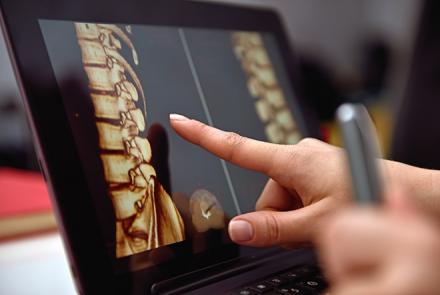Over 600 million worldwide suffered from back pain in 2020, 10% of the global population. This number is expected to grow to over 800 million by 2050 according to a Lancet report.
Back pain is also a significant contributor to societal and economic burden and a growing issue in Asia and Africa. Let us understand it better and work towards preventing this condition.

To get a proper diagnosis of Back Pain, the doctor will go through multiple steps including a medical history, a physical examination and may even need to prescribe some diagnostic tests depending on the location and type of back pain. This is important to determine the right course of treatment.
At the time of a consult, the doctor will :
- Ask Medical History
- Pain characteristics (location, intensity, duration, onset, and triggers)
- History of injury or strain (recent trauma, lifting heavy objects)
- Lifestyle factors (posture, physical activity, occupation)
- Medical history (previous episodes, chronic conditions, osteoporosis, arthritis)
- Associated symptoms (numbness, weakness, fever, weight loss, bowel/bladder dysfunction)
- Conduct Physical Examination
The doctor may assess:
- Posture and gait (to identify abnormalities)
- Range of motion (flexibility and stiffness)
- Palpation (checking for tenderness or muscle spasms)
- Neurological exam (testing reflexes, strength, and sensation in legs)
The doctor may also prescribe some of the following tests depending on the location and type of back pain.
A. Imaging Studies
- X-ray – May be useful to detect fractures, arthritis, or spinal abnormalities.
- MRI (Magnetic Resonance Imaging) – Helps to screen soft tissues, nerves, and discs.
- CT scan (Computed Tomography) – Helps to identify bone problems and disc herniations.
- Bone Scan – Used to detect infections, fractures, or tumors.
B. Laboratory Tests
- Blood Tests – Help to rule out any infections, inflammatory conditions (e.g., rheumatoid arthritis).
- Urinalysis – Helps rule out kidney-related pain.
- Electromyography (EMG) – It measures muscle response or electrical activity in response to a nerve's stimulation of the muscle. Helps to evaluate nerve function for conditions like sciatica (nerve-related pain in lower back radiating to buttocks and thigh).
Changed
16/Aug/2025
Condition

















